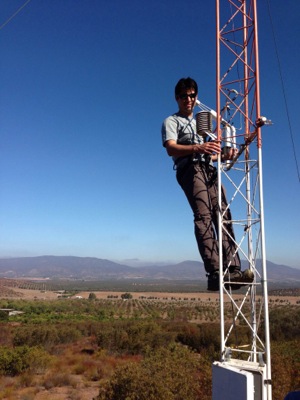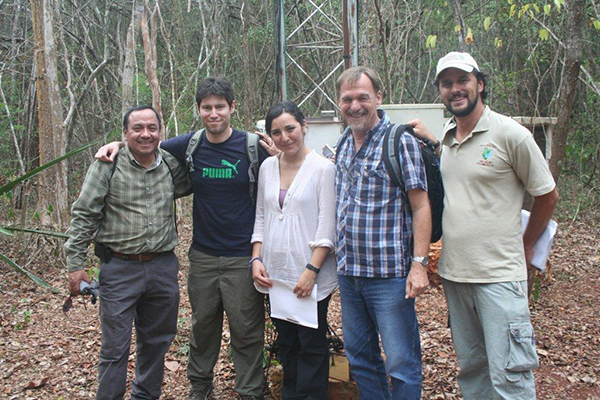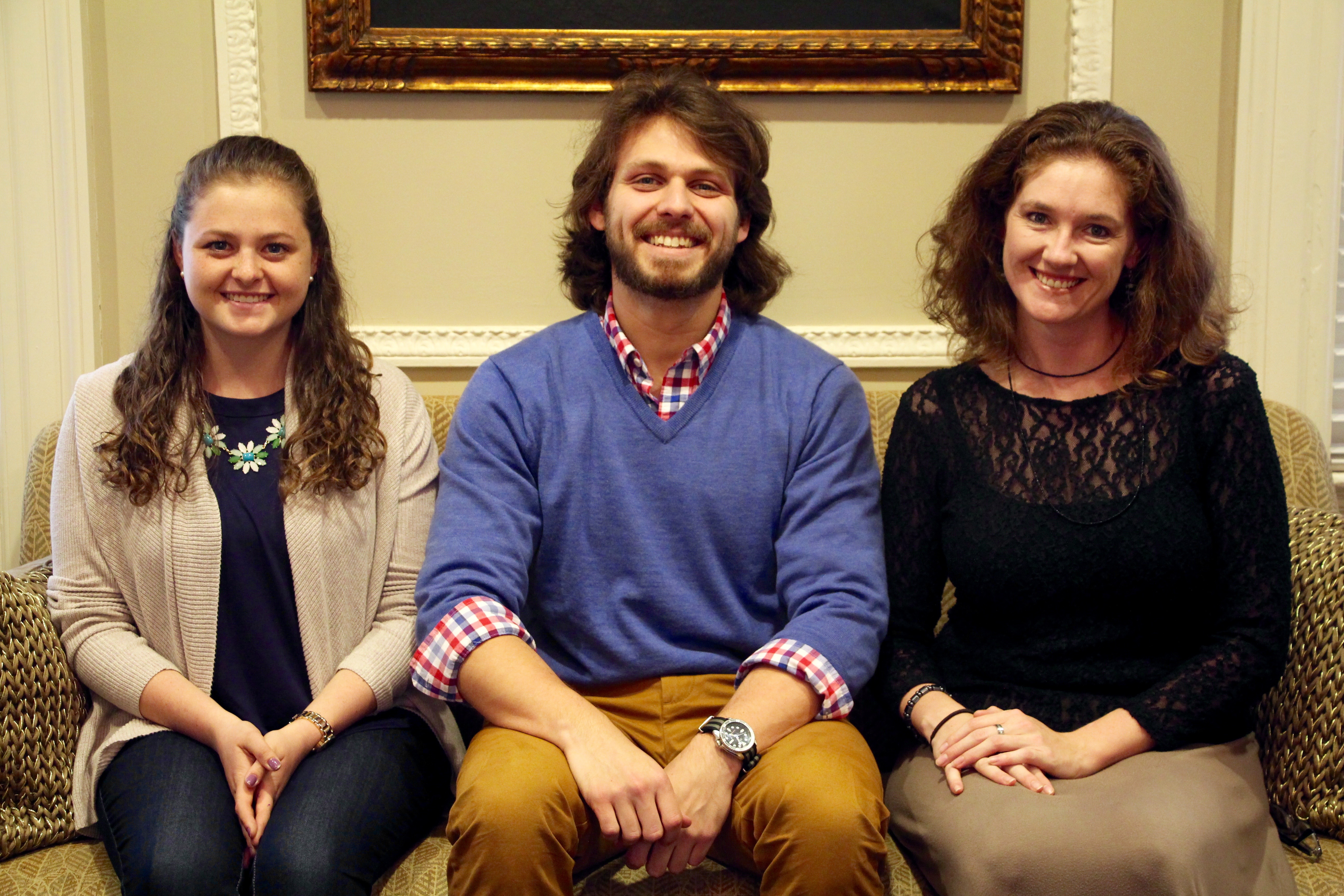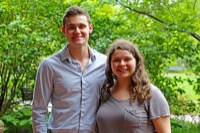

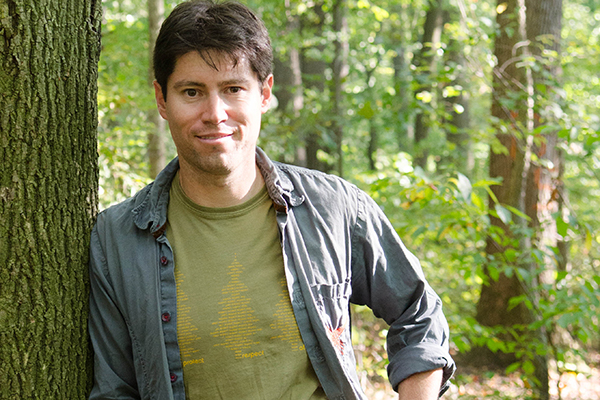
Protecting forests
NASA funds UD-led research on carbon dynamics in Mexico
2:37 p.m., Oct. 8, 2013--Working with a National Aeronautics and Space Administration (NASA) grant, University of Delaware researcher Rodrigo Vargas is collaborating with the U.S. Forest Service and multiple institutions in Mexico to provide information to support implementation of the international program on Reducing Emissions from Deforestation and Forest Degradation (REDD+) by improving forest management, carbon stock enhancement and conservation.
It has been estimated that greenhouse gas emissions from deforestation and forest degradation around the world may contribute up to 20 percent of global emissions. A key REDD+ goal is to make forests more valuable standing than they would be through logging by creating a financial value for carbon that is stored, or sequestered, in vegetation.
Global Stories
Fulbright awards
Peace Corps plans
Vargas, assistant professor in the College of Agriculture and Natural Resources’ Department of Plant and Soil Sciences, is working as the principal investigator on the three-year project with a team that includes members from UD, the U.S. Forest Service, six different Mexican institutions and the National Forestry Commission of Mexico (CONAFOR).
The overarching goal of the project is to analyze carbon stocks and dynamics from ecosystems to the regional-scale to improve a framework for monitoring, reporting and verification (MRV) to support implementation of REDD+ in Mexican forests.
The project could lead to UD becoming a key research institution on REDD+ initiatives and an important repository of information about carbon dynamics in Mexico to be made available throughout the scientific community.
The work builds on research that Vargas started as an assistant professor at a national research center in Baja California, Mexico, where he worked with scientists to establish the Mexican network of eddy covariance sites (MexFlux). The eddy covariance technique allows measuring the exchange of mass (e.g., carbon dioxide and methane) and energy between terrestrial ecosystems and the atmosphere; in other words it is possible to measure how ecosystems “breathe”.
In that past work, Vargas was able to facilitate collaboration between a network of 11 eddy covariance sites across Mexico in different vegetation types.
“Some of them are in forests and in those specific sites, we want to create intensive monitoring sites in collaboration with the participating institutions,” said Vargas, explaining that those intensive monitoring sites would provide the research team fundamental information of how the forests are growing and breathing.
The research will consider data from NASA satellites, the MexFlux sites, as well as intensive forest inventory plots that CONAFOR has established, for information on MRV of REDD+ activities.
“REDD+ is an initiative for the reduction of emissions by deforestation and degradation and includes conservation and sustainable management of forests and the enhancement of forest carbon stocks in developing countries,” Vargas said, and the MRV models are important as they lend credibility to REDD+ activities concerning forest dynamics and carbon sequestration potential.”
Many nations would be interested in being a part of REDD+ activities so monitoring systems towards credible measurements are critical if they are going to implement the program — which is where the MRV models come in.
Providing important assistance to the project is Richard Birdsey, distinguished scientist with the U.S. Forest Service. Birdsey is a specialist in quantitative methods for large-scale forest inventories and has pioneered the development of methods to estimate national carbon budgets for forest lands from forest inventory data.
“He has led the establishment of several intensive monitoring sites in Mexico and has coordinated a USAID (U.S. Agency for International Development) program there which aims to improve monitoring of forests for REDD+ and biodiversity conservation, among other objectives,” Vargas said.
The group will be using capabilities from NASA’s carbon monitoring systems program and Vargas said the agency is very interested to test those capabilities in verifying these specific issues.
The research team will be using information from NASA satellites, which can provide data related to photosynthesis of forests. “Remote sensing platforms provide such information and we can validate and cross-validate those estimates from direct forest measurements and using ecosystem process based models,” Vargas said.
The team will start the research looking at a few specific sites that had already been selected by CONAFOR, and then hope to scale the research to encompass a gradient of forests across Mexico.
Vargas said that the project has a strong collaborative component with scientists across Mexican institutions. “Our collaborators know their sites and are critical partners for day-to-day activities at the study sites. In collaboration with them we will work to produce value-added products and synthesis studies about carbon dynamics across forests in Mexico,” Vargas said.
Working in Mexico provides a great opportunity to look at different types of ecosystems and gradients. Mexico is a mega-diverse country where nearly 40 percent of its territory is covered by forests. The long-term impacts of land use and anthropogenic changes have fragmented and fundamentally transformed the nation’s landscapes, creating a challenge to measure and estimate the carbon sequestration potential of these forests.
“It is a mega-diverse country and highly heterogeneous in terms of climates and ecosystems. If you go to the northern part of Mexico, there you will have arid and semi-arid ecosystems similar to the southwest of the United States -- like in Arizona, Texas and southern California,” Vargas said. “But as you move south, then you have coniferous forests, tropical dry forests and tropical wet forests mixed within a matrix of agricultural and urban developments.”
Vargas said that the spatial heterogeneity proves challenging as it pushes the models and the satellite observations to the limit. “We can’t measure everywhere all the time but we can identify some ecosystems and some sites from which we can get intensive information, and from that we hope to upscale to similar sites -- specifically in this case to identify potential for REDD+ activities and verify the information retrieved from satellites and predicted by models.”
Because of the wealth of information available, Vargas said the team can “ask very high level questions about carbon dynamics in Mexico. Hopefully with that information we can understand how the systems works with the goal that similar methodologies can be applied in other places. Mexico is a test bed but that doesn’t mean that it can’t be applied in other places, specifically across forest in Latin America for implementation of REDD+ initiatives.”
Article by Adam Thomas
Photos by Danielle Quigley and courtesy of Rodrigo Vargas




